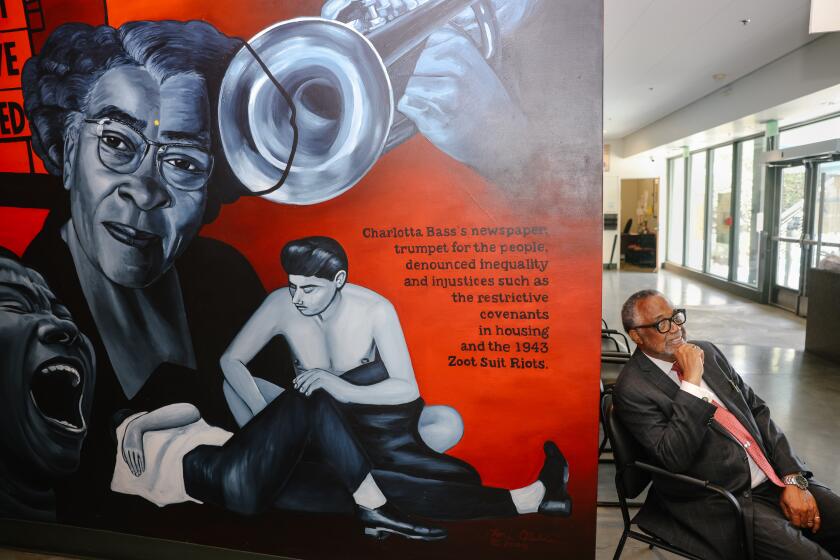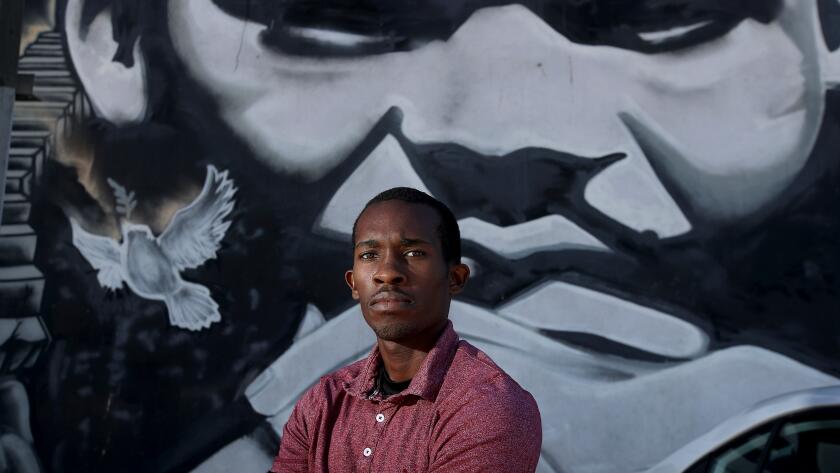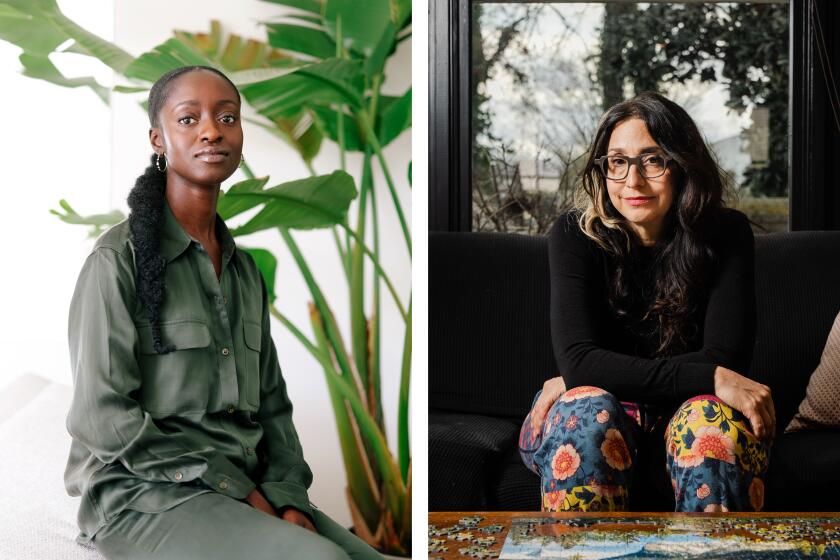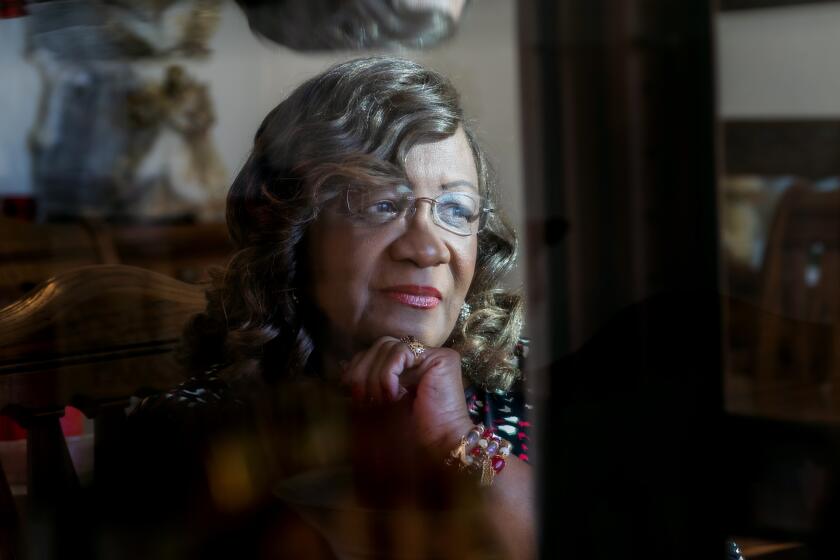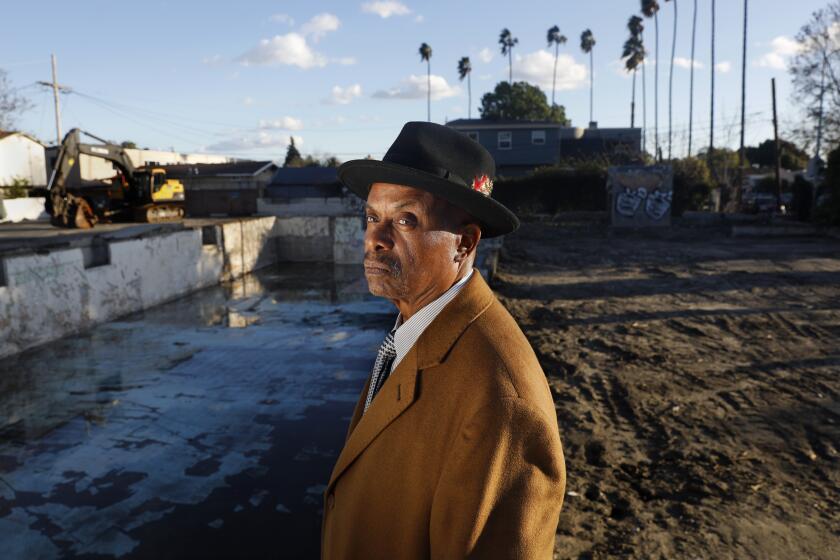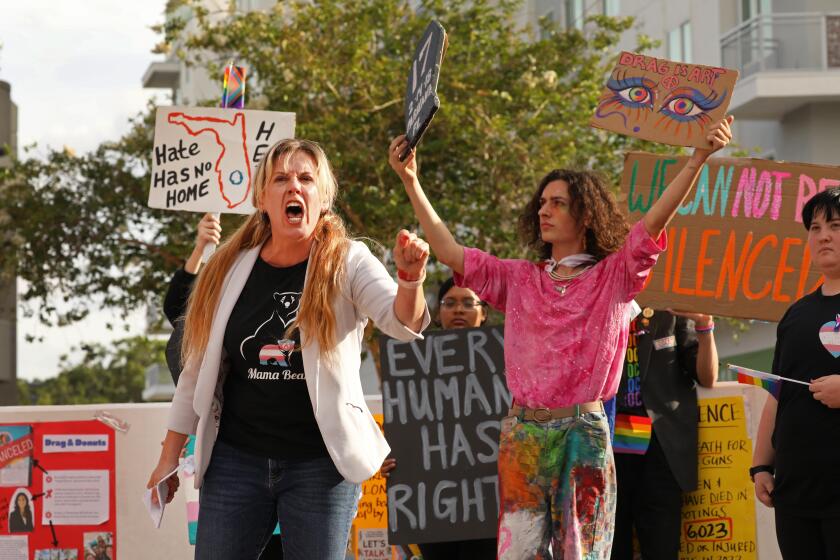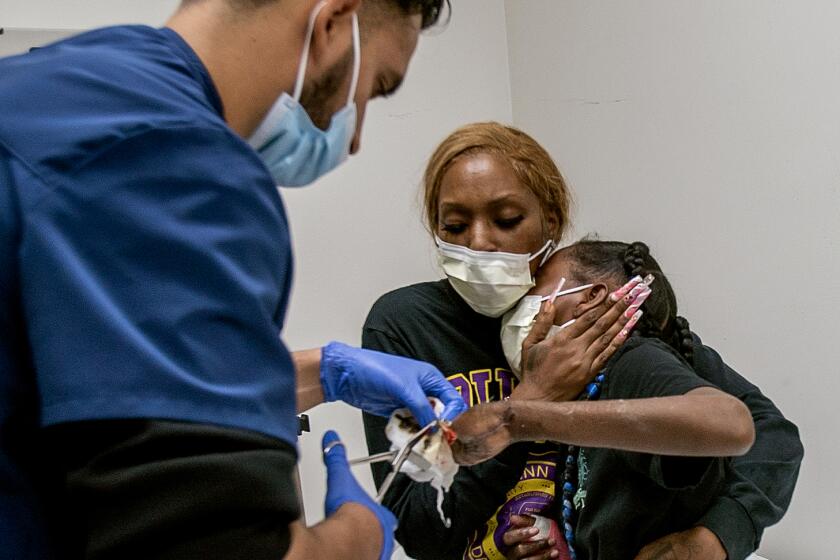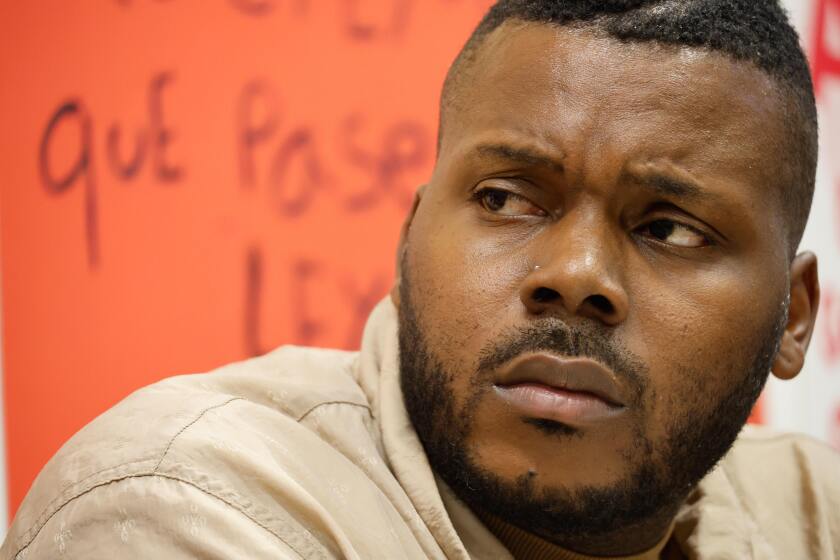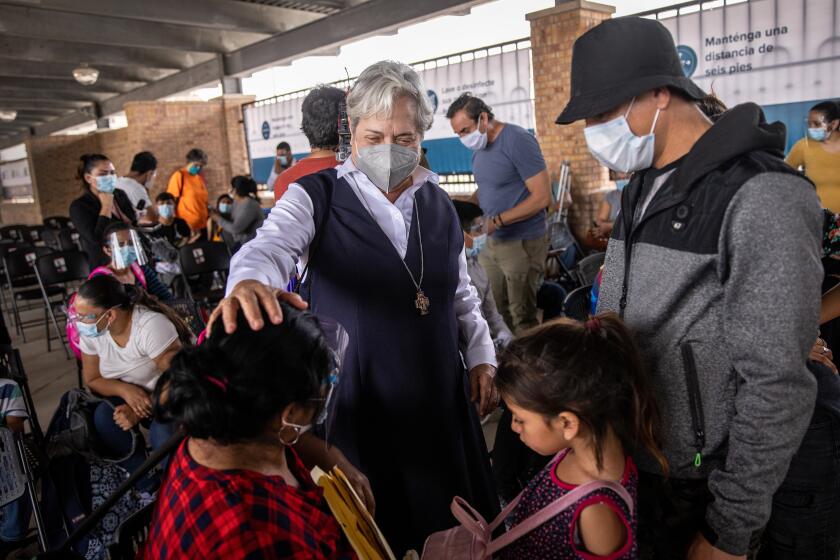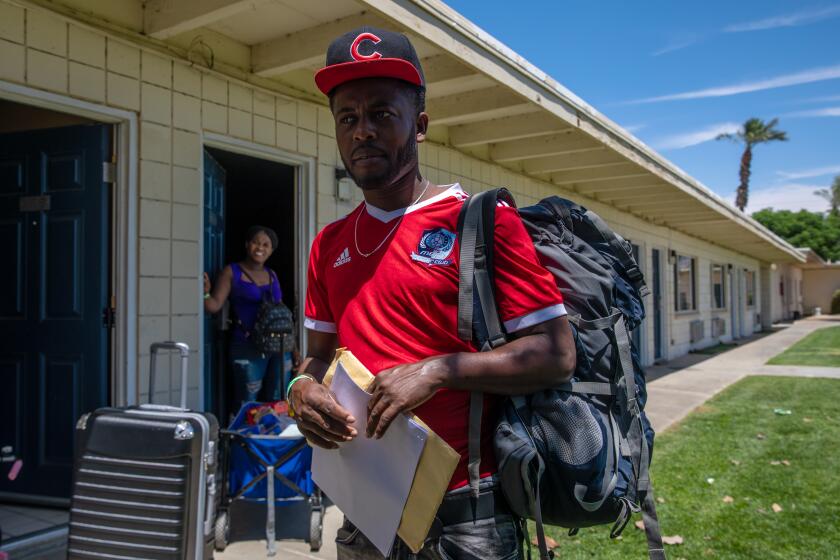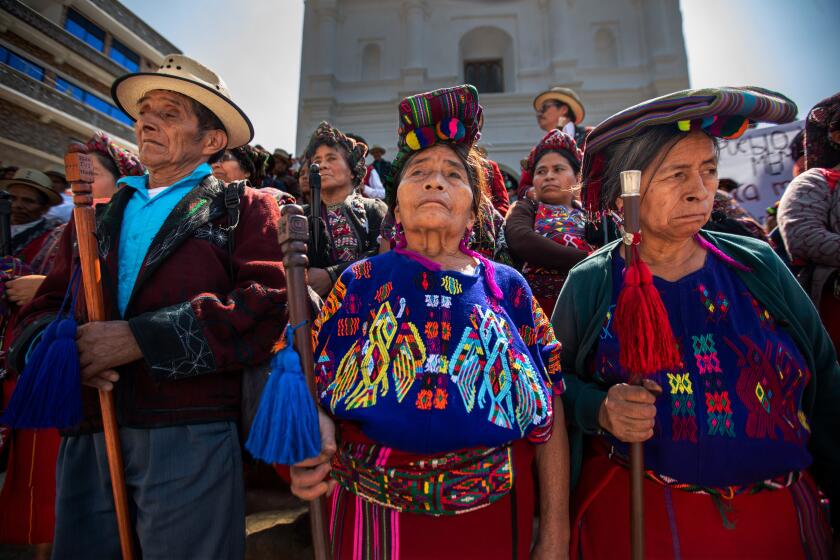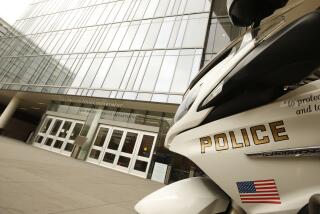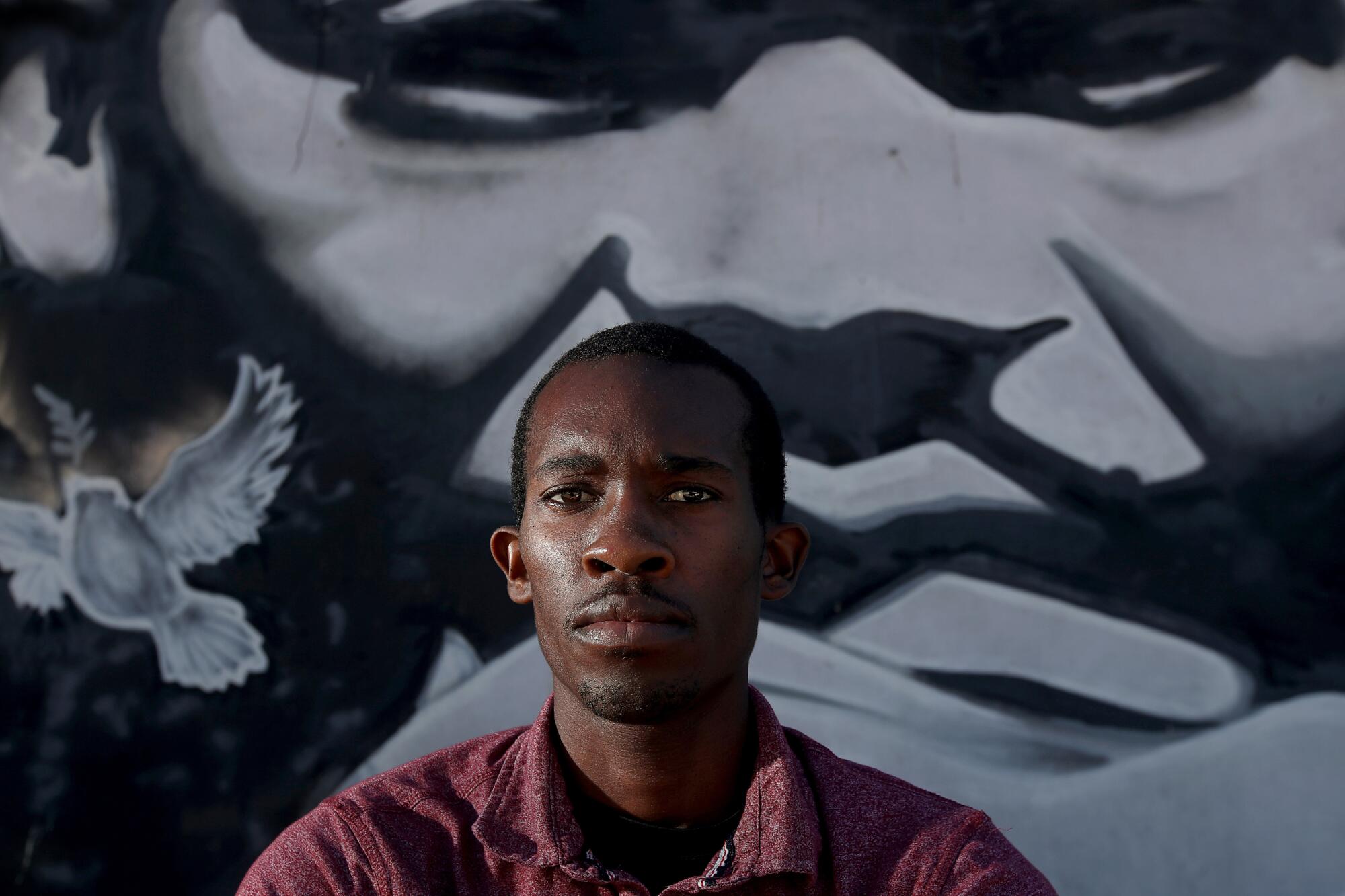
- Share via
He felt their gaze on his back as soon as he stepped out of the car.
As he recalls that day, Bernard Robins says he saw three Los Angeles police officers eyeing him suspiciously from their department cruiser. He knew what to do in these situations. Arms in the air. No sudden movements. And, taking the bass out of his voice, he announced that he was one of their own, a cop.
Still, out came the handcuffs.
The encounter wouldn’t have looked out of place in many neighborhoods south of the Santa Monica Freeway, where Black and Latino residents have long complained of being stopped by police, made to sit on the curb and watch as their cars are searched.
But, for Robins, a three-year Los Angeles Police Department veteran, the Aug. 27 episode shook him deeply, forcing him to experience again what it is to be a Black man in South L.A., not a Black cop. Even before the stop, he had been drifting into disillusionment. For weeks afterward, he found himself questioning the convictions that brought him to the LAPD in the first place.
The unity of two long-neglected communities during trying times is a reminder of what we desperately need in Los Angeles.
Could he really effect change from within? Could he help residents by donning a uniform that, to many, represented brutality and racism inflicted on a community — the community that made him who he is?
The department has not named the officers involved, only saying that the matter was investigated internally.
But who the officers were matters less to Robins than the style of policing he felt they embodied — one that he says would never play in the more affluent, and whiter, Westside.
Bernard Robins, the now former Los Angeles cop who was detained outside his South L.A. home by fellow LAPD officers, said the episode typifies the style of biased policing that’s practiced in some parts of the city.
Robins grew up in a part of South L.A. where the LAPD has long been seen as an occupying force dispatched by a distant, faceless government to keep Black and brown residents in their place. Here, tensions over the department’s aggressive tactics exploded into racial uprisings in 1965 and 1992.
Robins had friends and relatives who’d had run-ins with police that left them shaken. He himself was stopped twice by officers before turning 18, once at gunpoint. But, his teenage mind chalked the incidents up to wrong place, wrong time — rather than to his race.
Now, he’s not so sure.
As a boy, Robins looked up to his aunt, Lashawn Robins, who worked in the Southeast and West L.A. Traffic divisions. She cut a commanding figure in her navy blue LAPD uniform, but treated everyone with the same warmth and kindness she bestowed on her own kids. “Obviously, if my aunt did it, obviously it’s OK, it’s not that bad of a job,” he remembered thinking.
Joining the LAPD seemed a fitting tribute to his aunt, who died of cancer in 2020. He was already grieving the loss of two brothers, who were gunned down within years of each other.
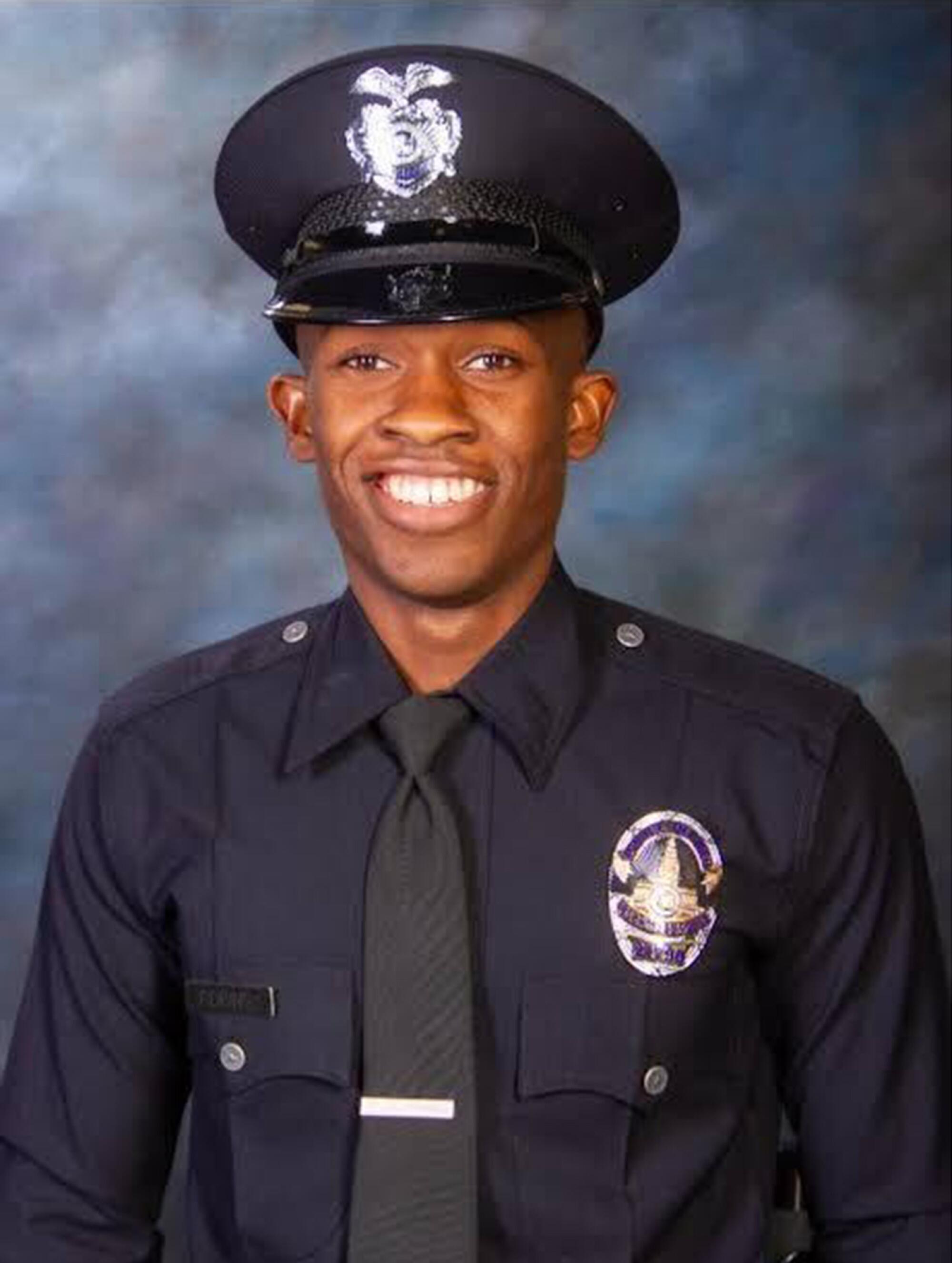
With his wiry, 5-foot-9 frame and quiet demeanor, Robins didn’t fit the stereotypical image of an LAPD cop. Nor was he exactly a dissident. Three summers ago, he watched in disbelief as mass demonstrations over police violence and racial inequality broke out in the wake of George Floyd’s death under the knee of a white Minneapolis police officer.
While he said he recognized the pain and anger of those who marched to protest the killings of Floyd and others, he still saw police as a bulwark against the crime that often plagues low-income neighborhoods like the one he grew up in.
A Black woman and a white woman went viral fighting racism. Then they stopped speaking to each other
A Black woman and a white woman who made a ‘Starbucks racism’ video that went viral joined to combat racism and teach DEI workshops. Now they don’t speak to each other.
Robins says he thought the LAPD could bridge the gap with communities of color by hiring more officers who, like him, had grown up in and loved the city.
He decided to join the department after a recruiter showed up at a practice for his community college football team, preaching about the need for more Black officers. Still too young at 20 to enroll at the Police Academy, he interned at the Southwest Division between 2018 and 2019. He remembered his shock, actually pleasant surprise, when on his first day he overheard detectives talking about their families. He thought: “OK, they’re just like us.”
On the chilly morning of his academy graduation, he felt a keen sense of pride as he slipped into his starched uniform for the first time as a full-fledged officer. His father beamed as he pinned on Robins’ badge.
After a stint in West L.A., he returned to Southwest. While some colleagues there treated people with compassion, he said, others went out of their way to hassle people of color or talk to them disrespectfully. Officers tended to stop them more often for ticky-tack traffic violations or make them show a driver’s license when just walking down the street — which he likened to formerly enslaved people being asked for their freedom papers.
“It’s modern-day slave patrols,” Robins said.
Some cops, he said, seemed to relish trying to goad young, usually Black or Latino, men into foot chases by driving up and startling them — knowing that if the youngsters bolted that would give police probable cause to detain and search them.
Palm Springs faces a $2-billion reparations claim from Black and Latino families who were burned out of their homes 50 years ago during “slum clearance.”
One incident, in particular, tore at him. Officers had pulled over a Black teenage boy for driving with tinted windows. While Robins’ colleagues rummaged through the car, looking for guns or drugs, the youngster suddenly burst into tears. When Robins asked what was wrong, he just shook his head.
“I’m tired of this happening to me,” the youth said.
Finding nothing, the officers let the boy go, without issuing a citation. Robins recalled that one officer joked that the youth must have been crying because “he probably has something in the car.”
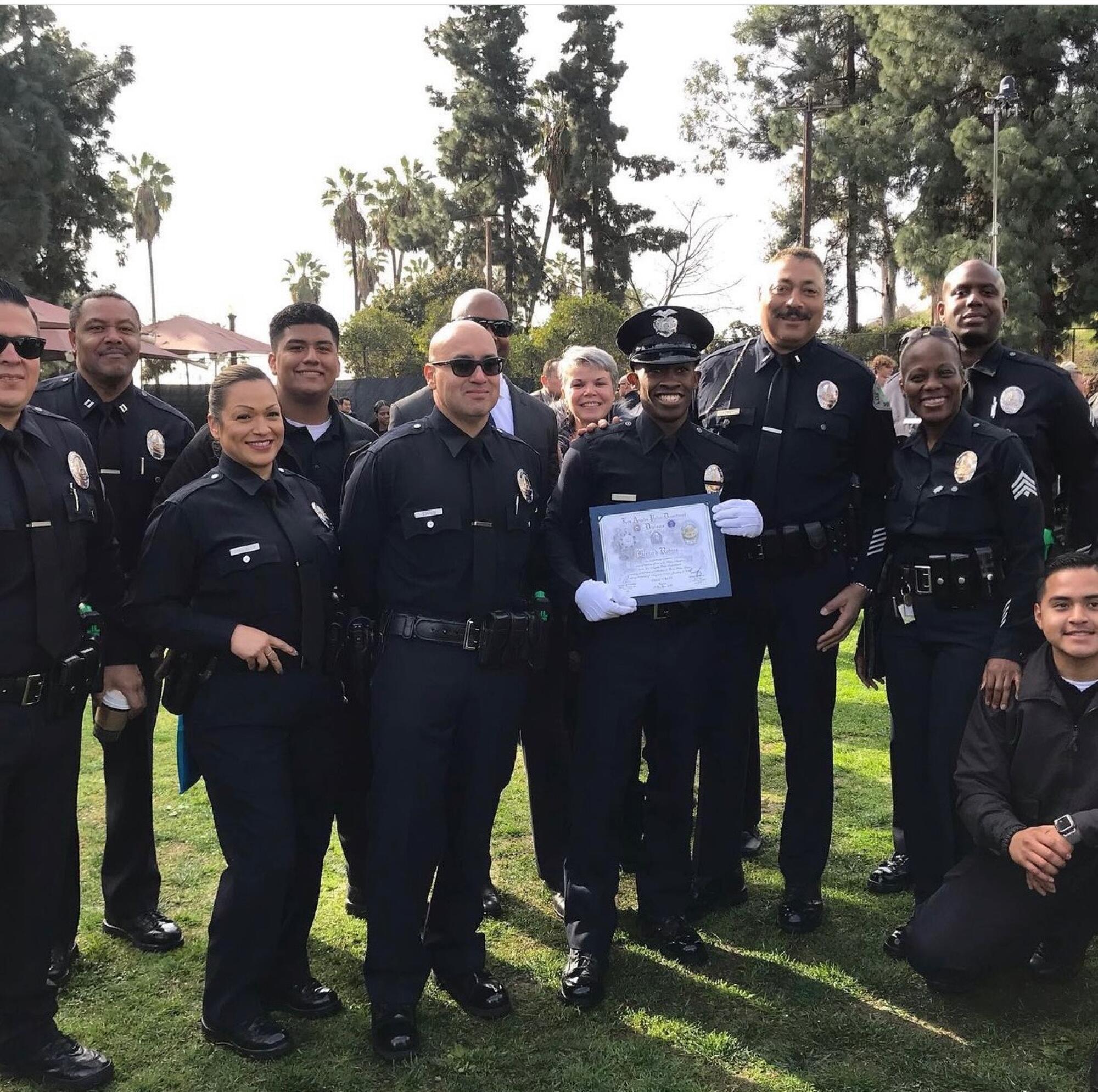
Robins continued working patrol, but such encounters weighed on him and, over time, he began questioning his own complicity.
At times, he challenged heavy-handed tactics and was sure that his speaking up kept fellow officers from using force. Other times he bit his tongue, feeling that it wasn’t his place to tell seasoned veterans how to do the job.
After a few months, he began volunteering with a unit charged with forging deeper connections between the department and the community. His days were now spent visiting schools, churches and recreation centers, and passing out school supplies to children.
Though hardly a household name to the general public, Helen Zia is a trailblazer — to some, a legend — in the fight for Asian American civil rights.
Some of his colleagues, he said, stopped speaking to him or were “outright hostile” after he joined the community policing unit. Others mocked that duty, saying, “Oh, Robins, you’re better than that.”
For Robins, the comments were characteristic of an “us-versus-them” mind-set; nowhere were these attitudes more prevalent, he said, than with gang enforcement teams.
The units are successors to the LAPD’s infamous CRASH gang units, which were renamed and restructured after the Rampart Division scandal in the 1990s. The department has made progress from those days, longtime observers say, in part by weeding out what civil rights attorney Connie Rice once called the “hunter killer” officers who used excessive force with impunity.
Months after a fire destroyed Victory Baptist Church, its pastor wrestles with what it means to be a Black church in a Latino neighborhood.
But complaints of brutality and racial discrimination have continued to plague the revamped gang units, which focus on “proactive” policing — in which officers initiate contacts with the public rather than responding to 911 calls. A 2019 report by the Police Commission found that 54% of searches by LAPD gang officers may have been unconstitutional or had other problems, such as lack of documentation.
Robins suspects that supervisors are willing to overlook suspect practices as long as officers make large numbers of arrests and take guns and drugs off the streets.
For Robins, a turning point came on a balmy evening in late August.
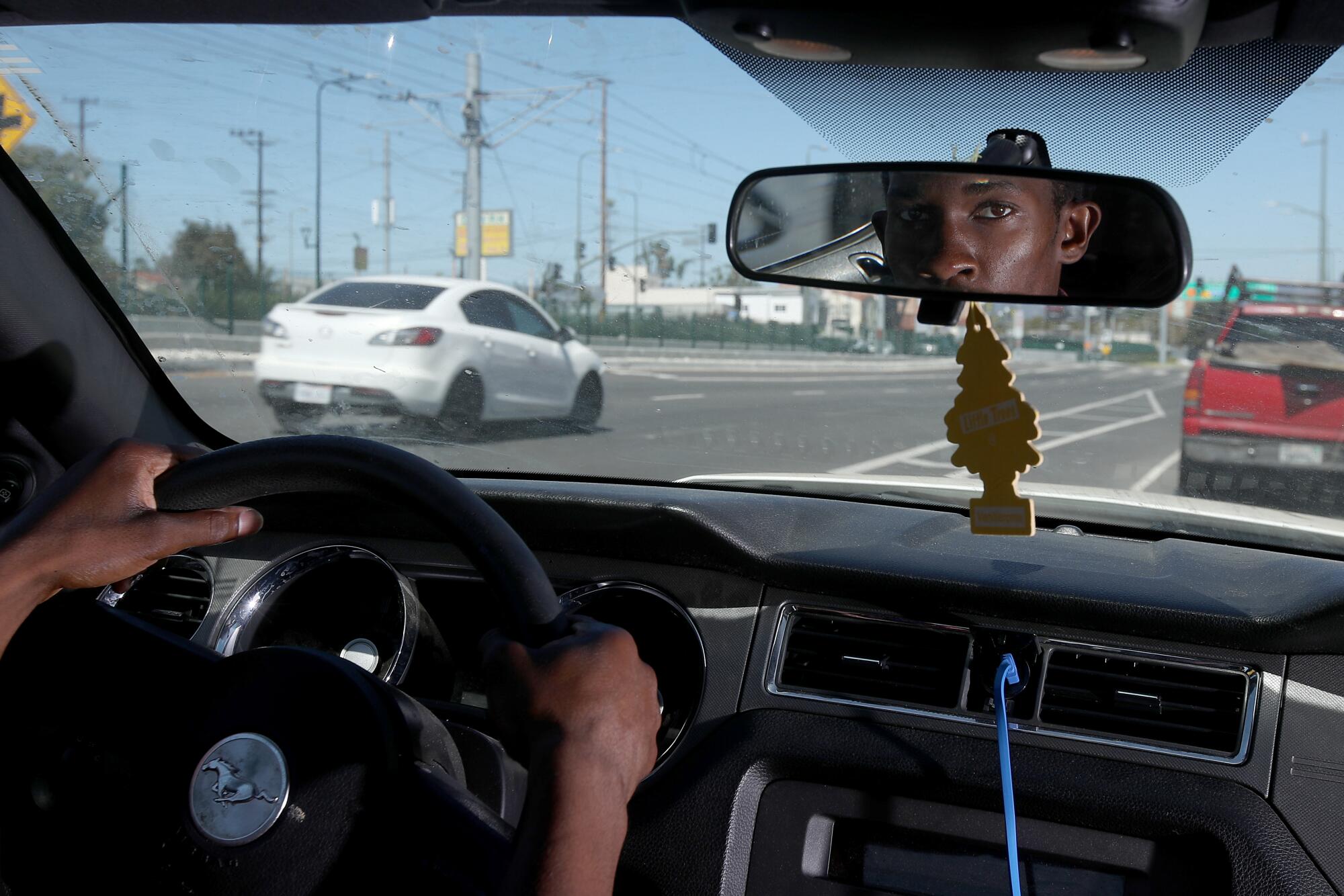
He had been off that day, indulging in his passion outside of work: filmmaking. He had just come from shooting a scene for “Trading Souls,” a movie he had written and co-produced about two teenagers from different socioeconomic backgrounds who switched bodies.
He was parked in his car outside of his parents’ home on West Boulevard, near the city’s border with Inglewood, chatting with a man who was working as a lighting technician. As the two men stepped from the car, Robins saw the officers staring him down from next to a black-and-white Ford Crown Victoria with a missing light bar — a model favored by the gang unit.
Instinctively, Robins raised his hands and began walking slowly in their direction. He called out that he was an off-duty officer from the neighboring Southwest Division and was carrying his service weapon, a 9mm Smith & Wesson.
But the officers, their hands hovering over their holsters, ordered him against a fence and handcuffed him.
In DeSantis they trust: Conservative parental groups and powerful politicians clash with parents, teachers and librarians who oppose the banning of books.
Sounding almost apologetic, one of the officers said, “You know how this neighborhood is,” which Robins took as a not-so-veiled reference to the area’s Black residents — and that police saw them as a threat.
The restraints stayed on even after the officers flipped through Robins’ wallet and found his department-issued ID. Could be a fake, one of them muttered. By then, a small group of onlookers had gathered, yelling angrily at officers to release Robins while some recorded the encounter on their phones.
“This is crazy,” a woman says. “He’s a police officer.”
One video starts a few minutes into the encounter and shows Robins, in white T-shirt and jeans, pacing in the fading light of dusk. His hands bound behind his back, he grows increasingly agitated as he tries to explain who he is. He pleads with the officers to call his watch commander in Southwest.
La’Veyah Mosley was playing outside in her family’s front yard with a sparkler. A neighborhood friend handed her a firework he had found. She lighted it.
But they insist that they can’t do anything until they sort out how he knew the lighting technician.
One officer is heard asking Robins, “You work Southwest, right?”
That’s right, Robins says.
“OK, well that’s why I don’t know you; I work 77th,” the officer responds. “Like I said, I’m not trying to target you, man, but now you’re trying to come at me sideways.”
Exasperated, Robins says again that he is a police officer, while turning to another cop. “You’ve got my ID, right, sir, Hernandez?” he says.
The officer begins to say, “You understand,” but Robins cuts him off: “I understand you have my ID as a police officer, and you’ve still got me handcuffed. Like come on, bro?”
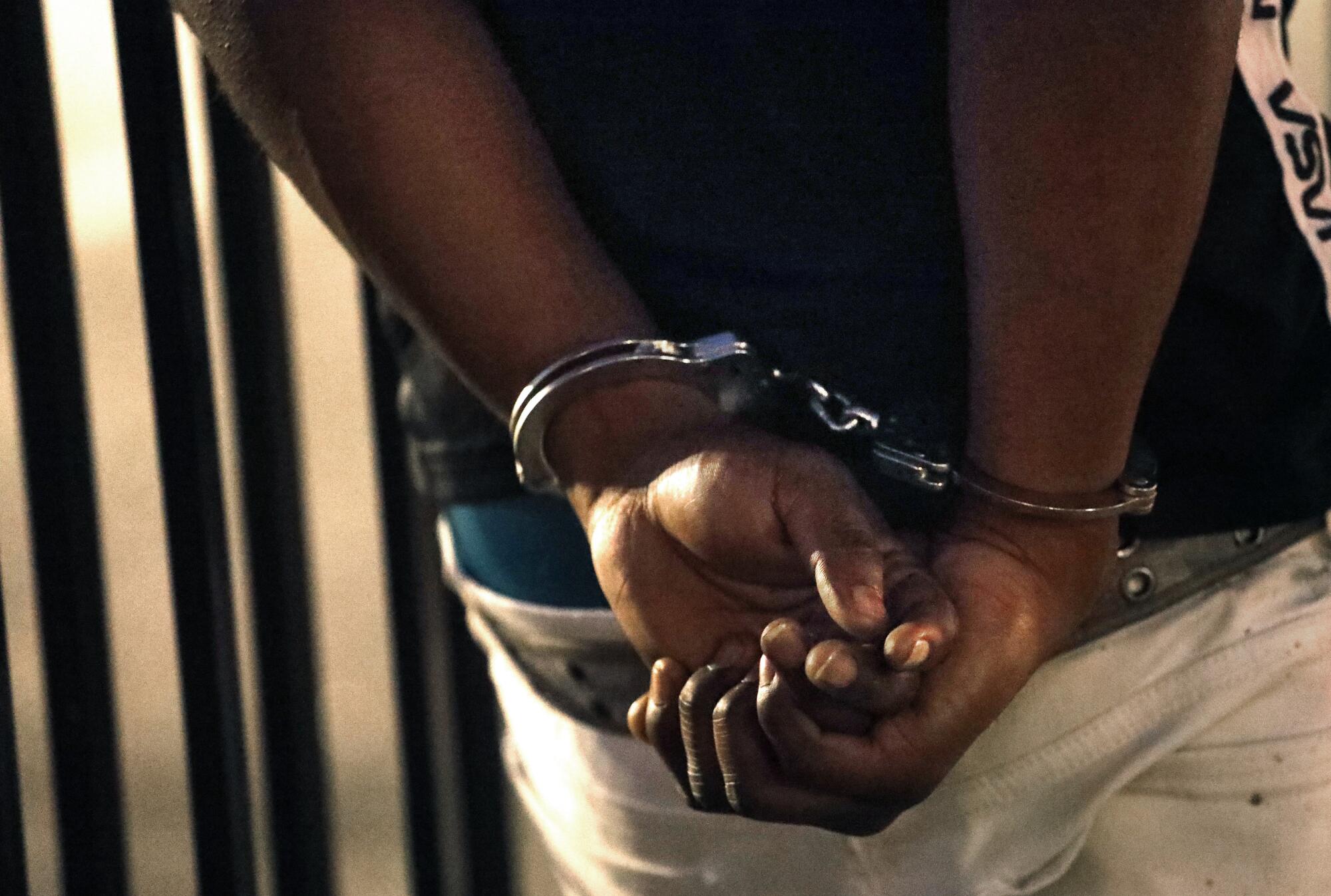
After a few minutes of back and forth, the first officer chides Robins for second-guessing their actions. With “window obstruction” — the car’s tinted windows — the officers had the probable cause they needed to search the vehicle, the officer says.
“If you’re a cop, I’m so sorry that you didn’t know this. But, if you have to know it now, it’s an educational thing,” the cop says.
Unbeknownst to him, Robins said in an interview, the officers found two guns and a quantity of drugs inside a backpack the lighting technician had dropped into the car when the police showed up.
Robins was taken to 77th Street headquarters and quietly led into a supervisor’s office, where a succession of officials quizzed him about his connection to DQuan Clarke, the technician. He was eventually released around 4:30 a.m. — nearly nine hours after he was first detained.
Soon after, rumors began to circulate around the department that Robins was associating with a man suspected of ties to the Rollin’ 60s Crips. The allegation was reported by the Los Angeles Times a few days after the incident. Clarke was arrested on suspicion of possessing a concealed gun and narcotics.
The two men had only met two days before, Robins said, after being introduced by a mutual friend from high school. But he knew enough to know that Clarke wasn’t a gang member, he said; Clarke had moved from the East Coast, with few ties to the L.A. area. Clarke’s case was presented to the city attorney’s office, but an office spokesman said it was rejected due to a lack of evidence.
Attempts to reach Clarke were unsuccessful.
Gov. Gavin Newsom’s economic mobility advisor, Michael Tubbs, tours California to hear poverty experiences.
Robins has since sued the department, accusing the officers of racially profiling and unjustly detaining him — part of a larger pattern of biased policing by the department’s gang enforcement units. He also started an online Change.org campaign to disband the 77th Street gang team, and shared his story with Tina Sampay, a journalist who goes by the online moniker “Slauson Girl” and covers Black L.A.
LAPD officials have repeatedly refused to officially explain the reason for the stop.
In an interview, LAPD Chief Michel Moore said that he couldn’t comment because of the ongoing internal investigation. “I certainly don’t believe the 77th gang unit should be disbanded,” he said.
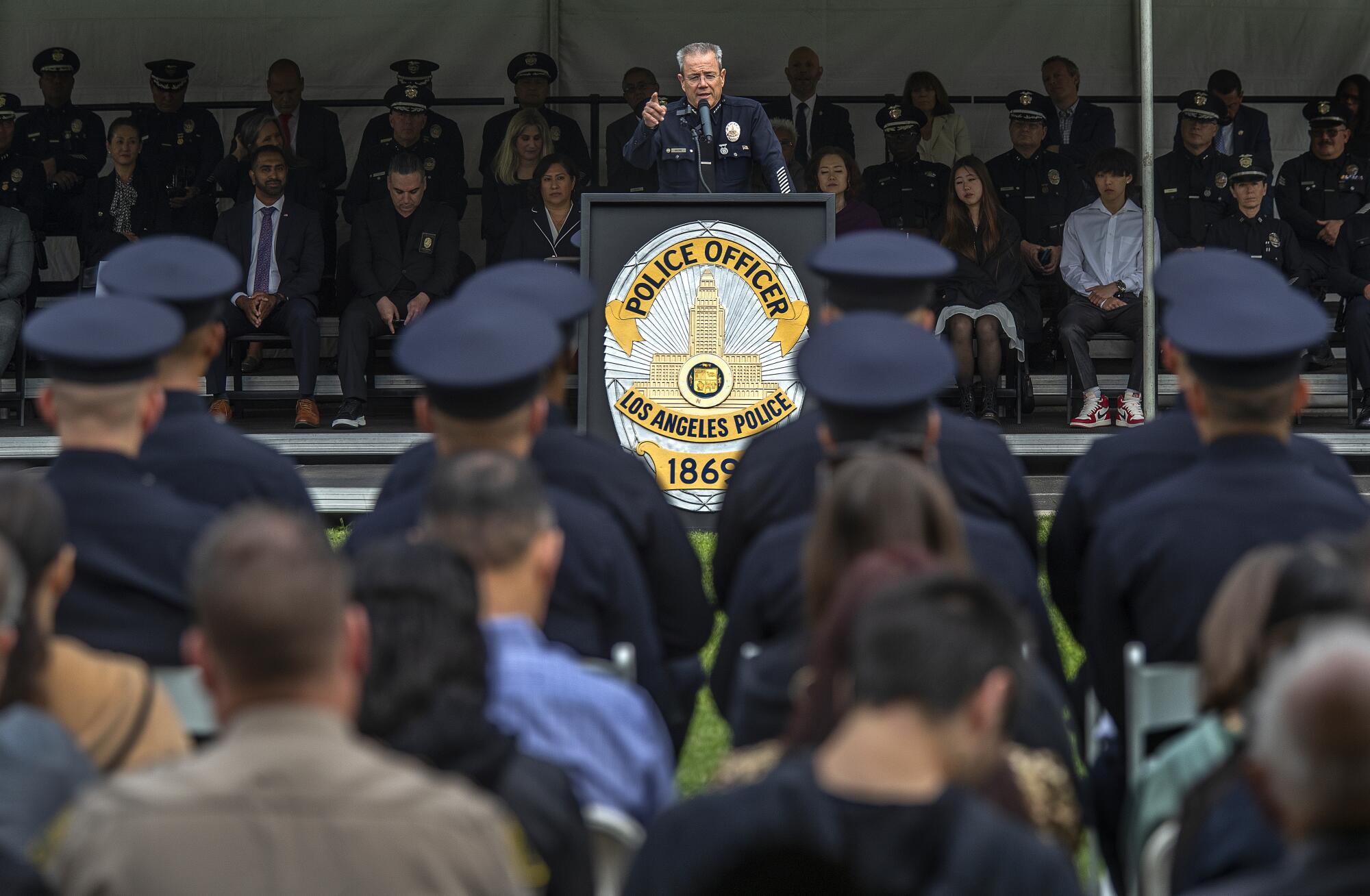
While conceding that the gang units are not “infallible,” Moore said that they have undergone retraining in recent years — ever since a federal consent decree brought on by the Rampart scandal forced reforms and subjected the LAPD to more civilian oversight. Today, he said, gang officers are among the most vetted in the department.
These specialized units are on the front lines of the fight against violent gangs that terrorize certain neighborhoods, he said. And because of the amount of time they spend in those areas, they also tend to be more familiar with local problems and residents’ expectations, he said.
“It’s one of the areas that’s the most scrutinized after the consent decree,” Moore said.
Still, on the 10th floor of the LAPD’s towering glass-and-steel headquarters downtown, news of Robins’ detainment set off all kinds of alarms. Among old-timers, the incident conjured unsettling memories of David A. Mack and Rafael A. Perez — the disgraced former officers at the center of the Rampart scandal.
Sister Norma Pimentel, a nun famous for her compassion toward migrants, said that parties on both sides of the aisle turned the bus carrying migrants from Texas to L.A. into a spectacle.
Officers were accused of numerous crimes, and Mack and Perez were known to commiserate with gang members. Under department rules, such interactions are forbidden.
But Robins’ case underscores another challenge for the majority-Latino LAPD: The portion of officers who are Black has fallen from 14% to roughly 9% over a decade.
Black law enforcement officers have always faced, inside their agencies, the same racial tensions felt inside the communities they patrol, said Eric Strong, a lieutenant with the Los Angeles County Sheriff’s Department.
Many of them, Strong said, are caught between their personal desire to change the way Black people are treated and a professional duty to carry out orders. Outside their stations’ walls, they feel the scorn of community members and activists, who accuse them of upholding a system that has historically oppressed the Black community.
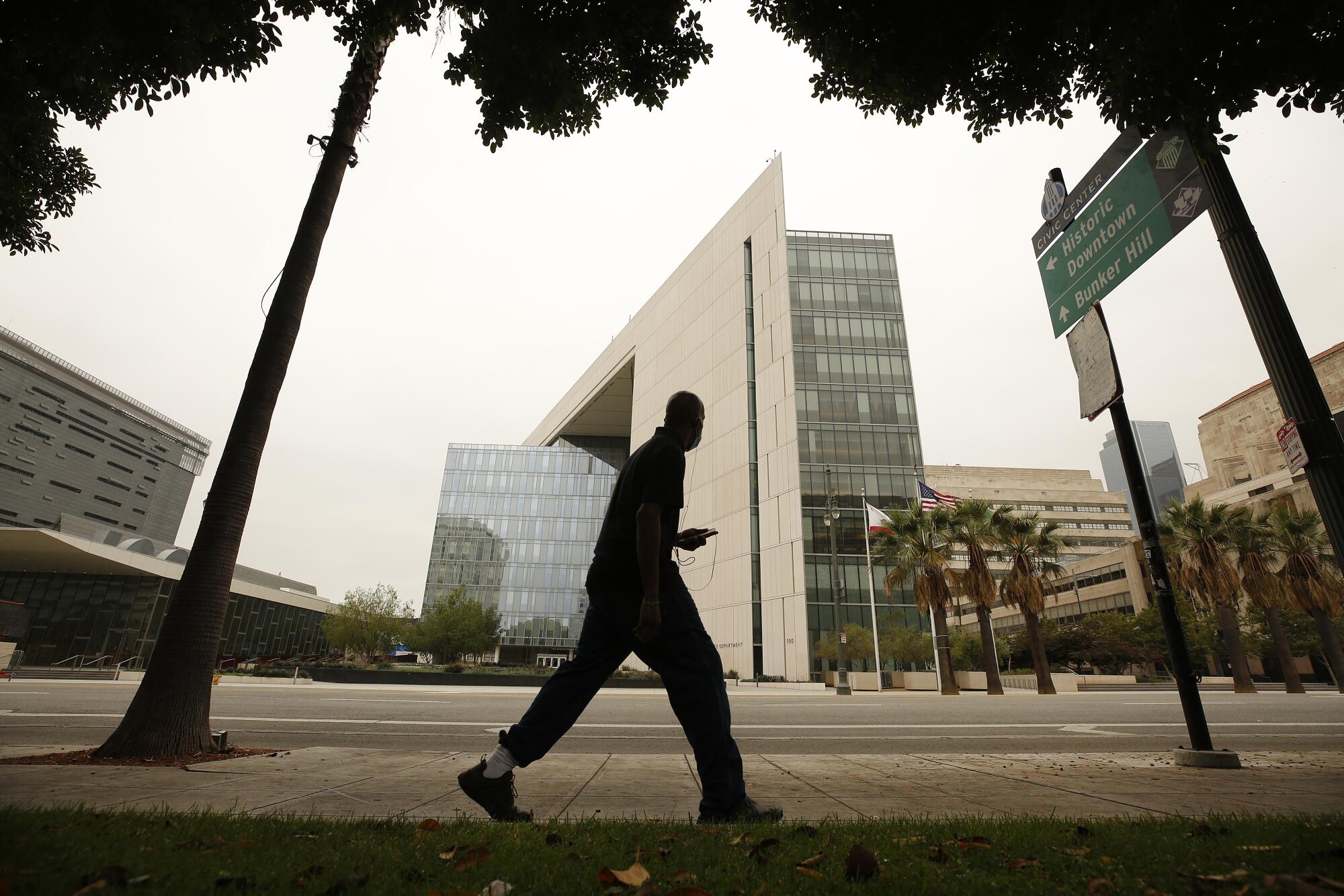
Jody Stiger, a longtime LAPD sergeant who left the force in July of last year, said that Robins’ case reminded him of an encounter early in his career, when he was pulled over by an officer who knew him.
“Matter of fact, our lockers were right next to each other in the Police Academy,” said Stiger, who is Black, adding that the other officer recognized him but still made Stiger get out of his vehicle before releasing him.
Like Robins, Stiger said that he also felt judged by colleagues because he grew up in South L.A. around people whose circumstances and their own decisions sometimes led to brushes with the law.
In one immigrant shelter in Riverside County, the shifting patterns of immigration and the pending needs are visible.
“Why are you hanging out in this neighborhood?” cops would ask him. “Why are you here or there?”
He was “proud to tell people where I was from, and I was proud to tell people I was from 77th division,” said Stiger, who retired from the department to take a job as director of community safety for the University of California system. “But to them it’s suspicious — that you’re up to no good or you’re doing something that you shouldn’t be doing.”
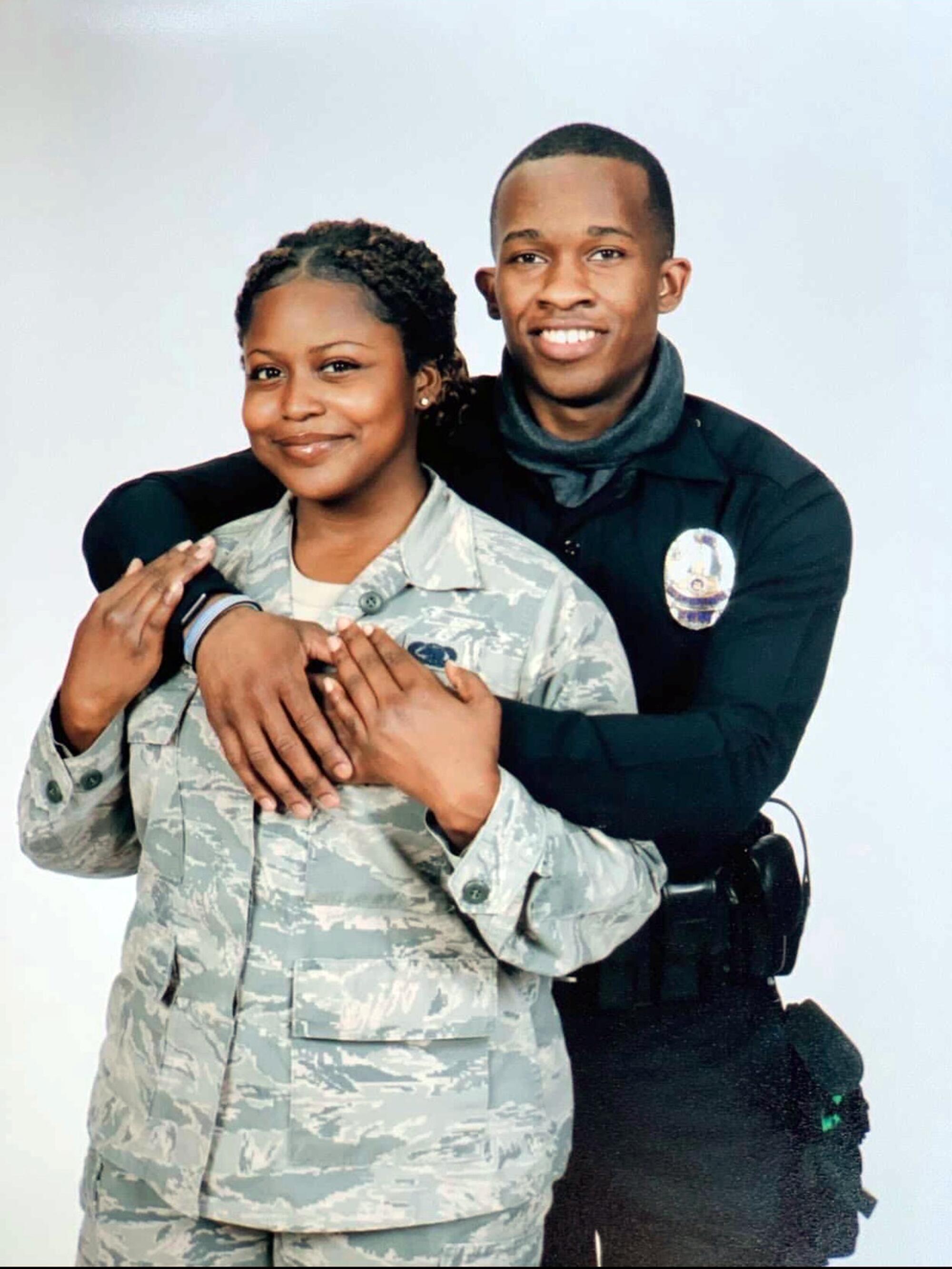
The day after his stop, Robins went back to the Southwest station, and his captain encouraged him to take time off to clear his head. What happened to him was unacceptable, Robins recalled his supervisor saying. He later heard that the episode had caused some bad blood between some cops from Southwest and 77th.
Several Black officers checked on him in the weeks that followed, he said. And while some colleagues in Southwest were supportive, Robins began to catch wind of the rumors swirling that he was affiliated with the Rollin’ ‘60s, something he emphatically denies. He began to wonder whether he would have to spend the rest of his career looking over his shoulder.
During his time off, he was directed to see a department psychologist, Robins said.
The daughter of a Guatemalan dictator convicted of genocide is running for president, raising questions about the nation’s memory of a brutal civil war.
When he finally returned to work, Robins found himself alone in the station’s normally bustling locker room. He thought back to something the psychologist had suggested: Stand in front of a mirror with your full police uniform, just to see how it feels. It was the uniform his aunt had worn, the one he’d been proud to wear.
As he slipped on the dark blue coat and pants, he stood quietly for a few minutes, staring into the grimy, full-length mirror next to his locker.
“All I did was put the uniform on, but it just felt too uncomfortable,” he said.
He walked back to his supervisor’s office, and told him he was done.
More to Read
Sign up for Essential California
The most important California stories and recommendations in your inbox every morning.
You may occasionally receive promotional content from the Los Angeles Times.
